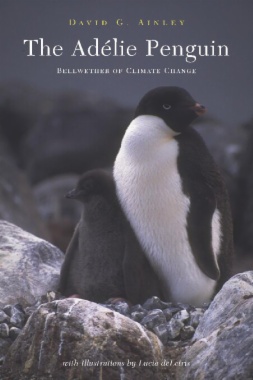The Adélie penguin is one of the best-studied birds in the world and is the subject of research programs from a dozen nations interested in monitoring changes in the environment and the food webs of the Southern Ocean. This species' population has been changing dramatically over the past few decades coincident with a general warming of the maritime portion of Antarctica. When the sea-ice is seen to decline so does the population of Adélie penguins. Further south, however, the population is increasing.
This book summarizes our present ecological knowledge of this polar seabird. In so doing, David Ainley describes the ecological factors important to its life history and details the mechanisms by which it is responding to climate change. The author also chronicles the history of research on Adélie penguins, beginning with the heroic expeditions at the beginning of the twentieth century.
Weaving together history, ecology, natural history, and written accounts from the earliest Antarctic naturalists into a fascinating account of this charismatic bird, The Adélie Penguin provides a foundation upon which future ornithological research and environmental monitoring can be based. It is a model for investigations into the effect of climate change on a particular species. The book also contains many fine illustrations from the accomplished illustrator Lucia deLeiris and photographs by the author.
- Table of Contents
- Acknowledgments
- Outline of the Present Volume
- 1. Introduction
- 2. Marine Ecology
- 3. Breeding Populations: Size and Distribution
- 4. The Annual Cycles
- 5. The Occupation Period: Pair Formation. Egg Laying and Incubation
- 6. Reoccupation Period: Chicks and Breeding Success
- 7. Predation
- 8. Demography
- 9. The Bellwether of Climate Change
- Literature Cited
- Index
- Plates

